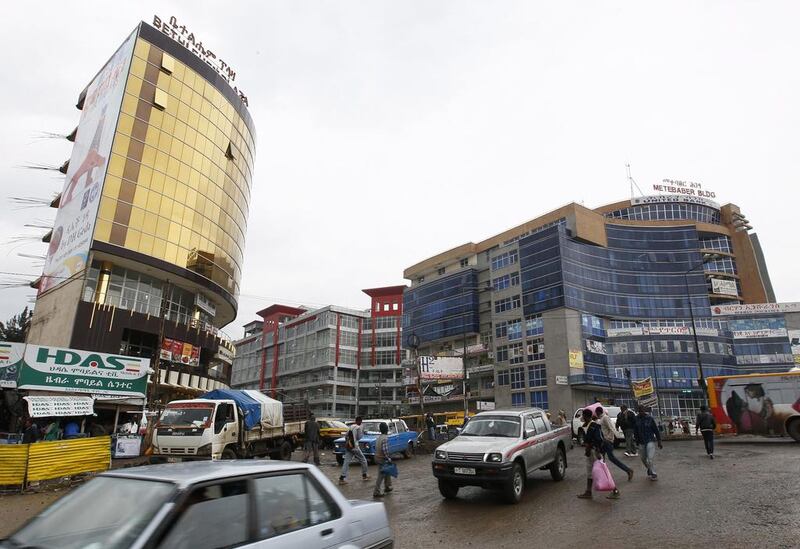Never before in the history of humanity has the quality of life improved so much, so fast, for so many people. Thanks to what has been achieved over the last 15 years, we are within a generation of a world without extreme poverty.
That might sound like an overstatement, but it really isn’t.
This week the world will come together at the United Nations in New York to agree on a new set of Global Goals, the Sustainable Development Goals, which will shape the world’s fight against poverty for the next 15 years. Bill and I believe that these goals are key to empowering the world’s poorest people to lead healthy and prosperous lives. We believe this not just because we’re optimistic people; we believe it because we have quantifiable, externally verifiable proof that ambitious goal-setting works, proof we’ve discovered because the world has done this before.
These Global Goals are the successors to the Millennium Development Goals (MDGs), the most successful undertaking to beat poverty in history. When the UN agreed them back in 2000 it is fair to say that they were met with some scepticism, but the progress since then has been remarkable. It’s unfortunate that so few people know about it, so I’d like to highlight three points that show just how far we have come.
First, since 1990, extreme poverty, child mortality and deaths from malaria have been cut in half. Maternal mortality has been almost halved and new HIV infections are down 40 per cent. Just think about that for a second, that’s 1 billion people no longer living in extreme poverty, 6 million children growing up and going to school who in 1990 wouldn’t have lived to their first birthday, 6.2 million people who would otherwise have died of malaria. That, to me, is pretty amazing progress.
Second, in spite of what you might have heard, Africa has been a phenomenal success story. Of the 20 countries which made the greatest progress on the MDGs, 15 were from Africa. As a case in point, Ethiopia is on track to meet all eight of the MDGs, including halving poverty and cutting child deaths by two thirds, after recording some of the lowest levels of human development before the year 2000.
And, third, in case you think there isn’t room for further improvement, things are getting better and faster than ever. Africa’s child death rates are dropping five times faster now than in the 1990s. Rwanda’s progress on reducing child mortality is the fastest in recorded history.
Of course there are many reasons for this progress – technology has advanced and economies have grown – but it would’t have happened without the MDGs. The clear, time-bound targets to improve the lives of the world’s poorest people with a deadline of 2015 galvanised governments, donors, the private sector, non-governmental organisations and community groups.
And so now, hopefully, it sounds like less of an overstatement when I say to you that yes, for the first time in history we are within a generation’s reach of ending extreme poverty. The world still has a way to go to reach that target but with the success of the MDGs we now have a proven global model for achieving progress. We know what works and what doesn’t work.
The next 15 years must be about investing in women, girls and children.
For example, we know that we need to do more to support women, and girls and children. Investing in their health is one of the smartest things we can do. When women are healthy, educated and have control of their lives, they can take advantage of economic opportunities and achieve long-lasting benefits for their families, communities and countries.
Just look at some of the numbers. The number one cause of death for girls aged 15to 19 is childbirth. So investing in family planning and maternal health can save the lives of hundreds of thousands of young girls.
Women spend 90 per cent of their income on their families while men spend 30 to 40 per cent. So helping women to get the skills they need to earn a living helps not only them, but also their sons, daughters and husbands.
And for every 10 per cent more girls that go to school, a country’s GDP increases by an average of 3 per cent. So sending a girl to school helps an entire country to develop.
All of this is why the Gates Foundation, alongside many governments, will be spending the next 15 years focusing on making sure that women and girls are at the heart of the SDG agenda. It’s why we have to continue to invest in the long term as it is only by tackling the root causes of economic underdevelopment that we can build a future where healthy, educated people can control their own destinies, and create safe, prosperous lives for their families, communities and countries.
Given what we have achieved so far, it would be difficult to overstate what’s possible.
Melinda Gates is co-chair of the Bill & Melinda Gates Foundation





